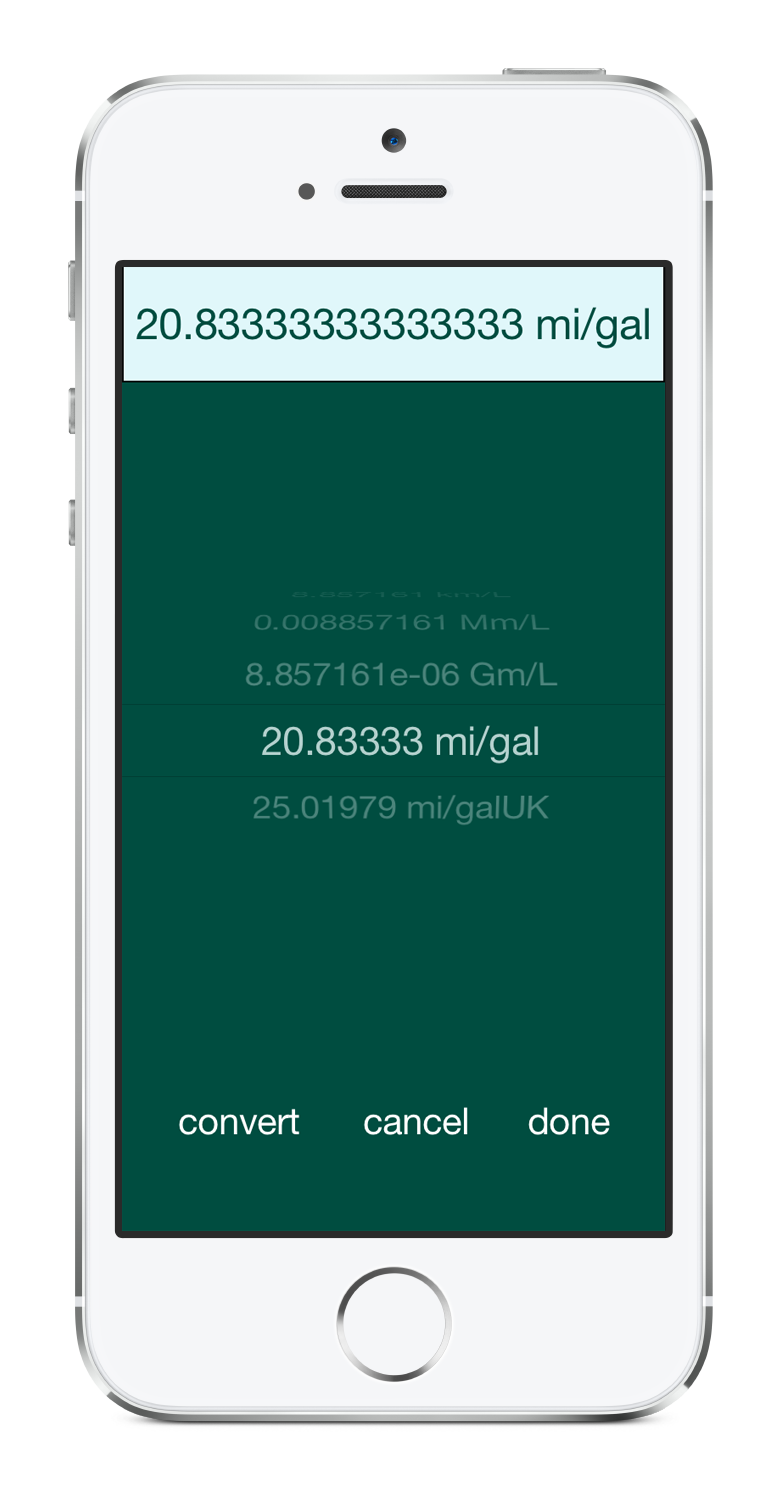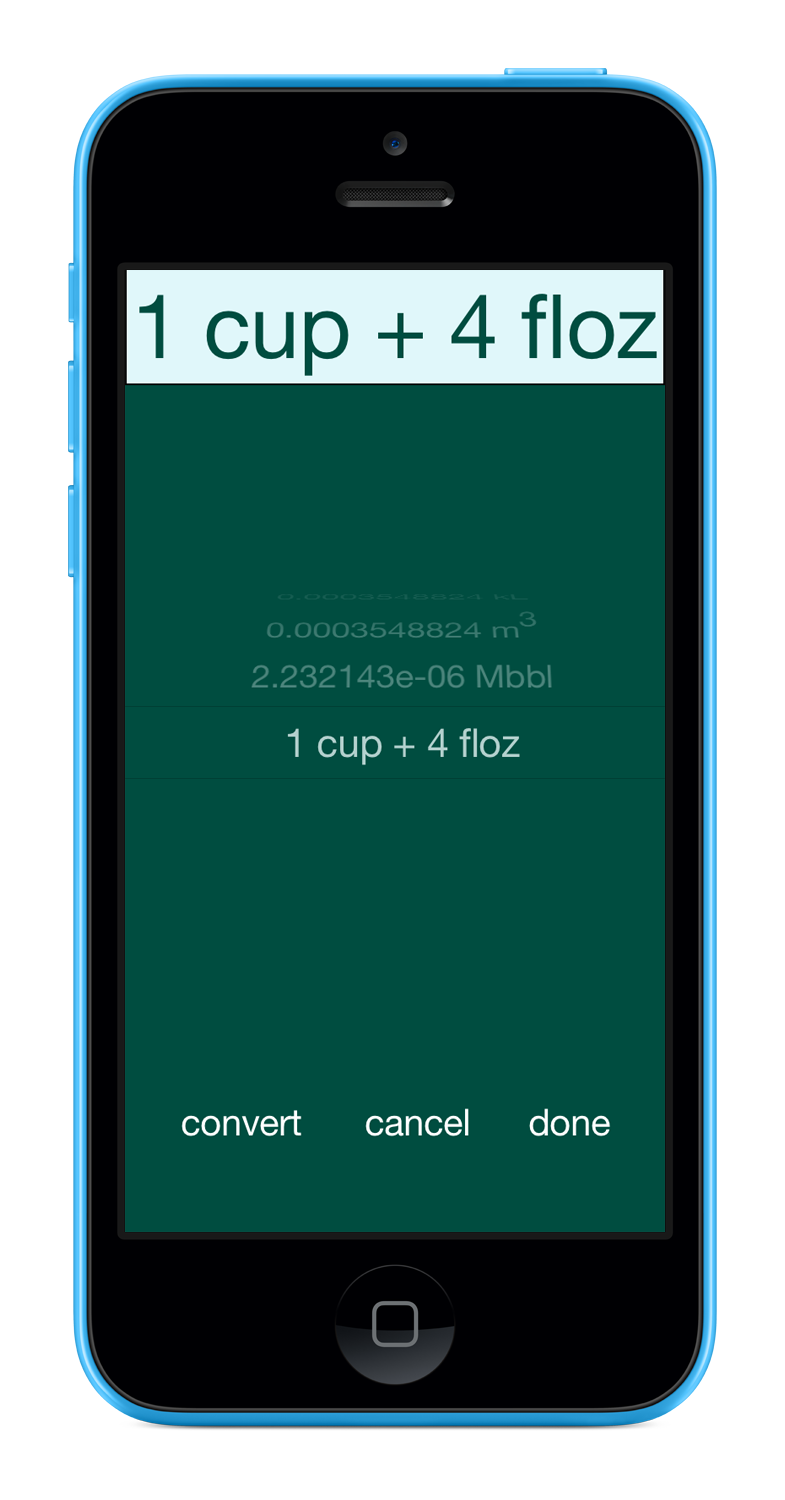Meet the next generation scientific calculator with units
Meet PhySyCalc—makes the others seem like slide rules.
How is PhySyCalc different from other calculators? It allows you to include unit symbols in your calculations, obtaining the answer in the desired unit without those extra unit conversion steps. On top of this great simplification, PhySyCalc knows every fundamental physical constant. It even knows physical properties for elements and isotopes in the periodic table. This allows you to get numerical answers in the desired unit in a fraction of the time you'd spend on a conventional calculator. PhySyCalc is quick to learn and easy to use. Can't remember a unit symbol? PhySyCalc helps you find and append commonly used units onto a number. PhySyCalc uses a natural infix notation for calculations. This means you can enter and read through the entire expression in full before calculating the result, helping you quickly identify and fix any input errors.
Not only does PhySyCalc save you time, it also saves you from mistakes. A conventional calculator will also give you a numerical answer, even if you accidentally multiplied instead of dividing. With PhySyCalc you’ll know right away that you entered the calculation wrong because the result will have the wrong units.
As a teaching tool PhySyCalc offers students better insights in the concepts of physical quantity, dimensionality, and units. A student using PhySyCalc soon understands the connections between the base SI quantities and all the derived quantities.
PhySyCalc's sole ambition is to be the world's best scientific "pocket" calculator.
Do you cook?
Shop at market? Then PhySyCalc is for you. Scale or convert your ingredient quantities in no time at all.
Science student or professional?
Then PhySyCalc is really designed for you. PhySyCalc has all the math functions you expect on a conventional calculator and more. Using just the element symbol, you can retrieve atomic weights, isotope weights, and isotope abundances. Using the chemical formula PhySyCalc will give you the molar mass.
Built into the calculator are many useful mathematical functions, as well as a number of useful physical constants. Included also are the speed of light, and the mass of the electron, proton, and neutron, all with appropriate units.
Get the right answer faster.
Remember this homework problem?
What pressure in atmospheres does 0.078 moles of hydrogen exert on the walls of a 42.0 mL container at 25.0 °C?
If you've studied hard you already know that you need to use the ideal gas equation of state, pV = nRT.
So, you identify the variables
n is the # of moles = 0.078 mol
T is the temperature in Kelvin = 273.15 K+25.0 K = 298.15 K
V is the volume = 42.0 mL
R is the gas constant = 8.314510 J/(K • mol)
and know that you can get the pressure using p = nRT/V. You pull out your calculator and plug in the numbers
0.078 • 8.314510 • 298.15 / 42.0 = 4.60380357635714
and write down 4.6 on the exam. Time to move on to the next problem, right? Not so fast: don't you need units on that number? Oh yeah, the question asked for the pressure in atmospheres. So, it's 4.6 atmospheres, right? Guess again! Maybe you should write out the calculation on paper with units:
0.078 mol • 8.314510 J/(K • mol) • 298.15 K / 42.0 mL
Rats! Now you have to do two calculations. Do the number calculation on the calculator (and get 4.6), and work out the final units calculation by hand on paper.
mol • J/(K • mol) • K / mL = J/(mol • mL)
OK, the answer is 4.6 J/(mol * mL). But wait, you need the answer in atmospheres! Gosh, this seems like a lot more work than it needs to be.
We agree!
With PhySyCalc you can enter the entire calulation with numbers and units and get the numerical answer with the correct units. Try it.
And there are all the possible answers with the correct units.
Wait! You need the answer in atmospheres. No problem. Simply scroll down, select the answer in atmospheres, and press done. It's that easy!
Throw away those tables
We've added fundamental physical constants so you no longer waste time looking them up. For example, instead of typing in the full gas constant with units you can just pull up the constants and keep on calculating. And the best part is that PhySyCalc gives you the right answer without worry about the units of the gas constant (or any constant). Kiss all those dimensional analysis problems goodbye!
Click here to see the full list of units and constants that PhySyCalc knows by name.
Atomic weights of any element or isotope in the periodic table are immediately available with an element symbol.
If you need the atomic weight of 16O isotope you can use
aw[O16]If you need the natural abundance of 10B use
abundance[B10]PhySyCalc features include:

What are you waiting for? Throw away that slide rule and buy PhySyCalc today at the AppStore












